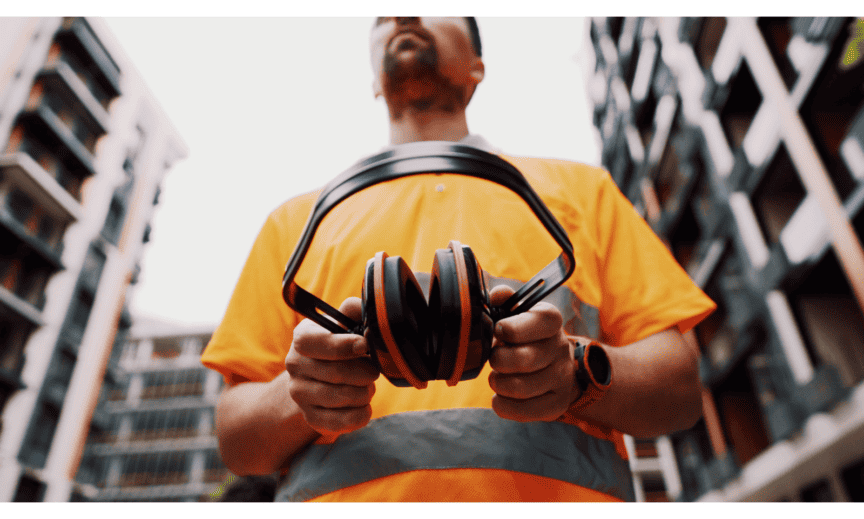As hearing professionals, our foremost concern is the preservation of your auditory health. Hearing loss is a pervasive issue that affects millions of individuals globally. It can impact one’s quality of life, making it crucial to understand the risk factors and preventative measures that can help us protect our hearing. In this article, we will explore how daily noise exposure can lead to hearing loss, discuss the latest advancements in hearing loss prevention, diagnosis, and management, and emphasize the importance of early detection.
The Impact of Daily Noise Exposure
Daily life is filled with sounds, and while many are harmless, some can pose a serious threat to our hearing health. Noise-induced hearing loss (NIHL) is the result of prolonged exposure to loud sounds that can damage the delicate structures within the ear. This damage is often irreversible, making it essential to understand how daily noise exposure can lead to hearing loss.
Sounds are measured in decibels (dB), and the risk of hearing damage increases as the volume and duration of exposure rise. Prolonged exposure to sounds at or above 85 dB can lead to NIHL. Common sources of dangerous noise levels include concerts, sporting events, construction sites, and even personal audio devices at high volume. In recent years, there has been a surge in headphone usage, particularly among the younger population, which has raised concerns about the prevalence of NIHL.
The Inner Workings of the Ear
To appreciate the mechanisms of noise-induced hearing loss, we must first understand the inner workings of the ear. Our auditory system is a complex network of structures, with the cochlea playing a pivotal role. The cochlea is a spiral-shaped organ filled with thousands of tiny hair cells responsible for converting sound vibrations into electrical signals that our brain can interpret.
When exposed to loud noises, the hair cells within the cochlea can become damaged or even die. This results in a gradual decline in hearing sensitivity. Initially, it may be challenging to notice the effects, but over time, the damage accumulates, leading to significant hearing impairment.
Advancements in Hearing Loss Prevention
Hearing loss is often irreversible, but prevention is key. Fortunately, there have been several advancements in hearing loss prevention to mitigate the risks associated with daily noise exposure:
Hearing Protection Devices:
Modern hearing protection devices, such as earplugs and earmuffs, are designed to reduce harmful noise levels while preserving sound quality. They are essential tools for those working in noisy environments, attending loud events, or regularly using personal audio devices.
Noise Awareness Apps:
There are innovative smartphone apps available that measure ambient noise levels and provide real-time feedback. These apps can help users gauge their noise exposure and make informed decisions about when to use hearing protection.
Noise-Canceling Headphones:
While traditional headphones can contribute to NIHL, noise-canceling headphones are designed to block out external noise, allowing users to listen to music or other audio at lower, safer volumes.
Advancements in Diagnosis and Management
Early detection of hearing loss is essential for effective management. Regular hearing screenings, especially for individuals exposed to high noise levels, are crucial. With the aid of modern technology, we now have more accurate and convenient diagnostic tools, such as otoacoustic emissions (OAE) and pure-tone audiometry, which enable us to detect hearing loss at its earliest stages.
For those already affected by hearing loss, there have been significant advancements in management strategies:
Hearing Aids:
Hearing aid technology has seen remarkable improvements, with devices becoming smaller, more discreet, and offering superior sound quality. They can be customized to suit the specific needs of each patient.
Cochlear Implants:
For individuals with severe to profound hearing loss, cochlear implants can provide a remarkable solution. These electronic devices are surgically implanted and can restore a sense of hearing by bypassing damaged hair cells in the inner ear.
Auditory Training:
Audiologists now offer comprehensive auditory training programs to help patients adapt to their hearing loss and improve their communication skills.
The Future of Hearing Loss Interventions
The field of audiology is continually evolving, and we can anticipate more exciting advancements in the prevention, diagnosis, and management of hearing loss in the near future. Potential futuristic interventions may include:
Gene Therapies:
Researchers are exploring the potential of gene therapies to repair or replace damaged hair cells, potentially offering a revolutionary treatment for those with hearing loss.
Regenerative Medicine:
Stem cell research and regenerative medicine hold promise in regrowing hair cells in the cochlea, potentially restoring hearing function.
Neural Interface Technology:
Advancements in neural interface technology may allow for direct communication between the brain and hearing devices, potentially improving the quality of sound perception.
The Importance of Early Detection
Early detection of hearing loss cannot be stressed enough. As hearing professionals, our goal is to empower individuals to take control of their auditory health. Regular hearing screenings are a crucial part of this process. If you suspect hearing loss or are exposed to daily noise that puts your hearing at risk, seek professional guidance promptly.
In conclusion, understanding the connection between daily noise exposure and hearing loss is essential for preserving your auditory health. By staying informed about the risks, taking advantage of modern prevention methods, and embracing the latest advancements in diagnosis and management, you can ensure a lifetime of healthy hearing. The future holds great promise for even more effective interventions, but the key remains early detection and proactive hearing health management. Your hearing is a precious sense, and it’s our duty as hearing professionals to protect it.

